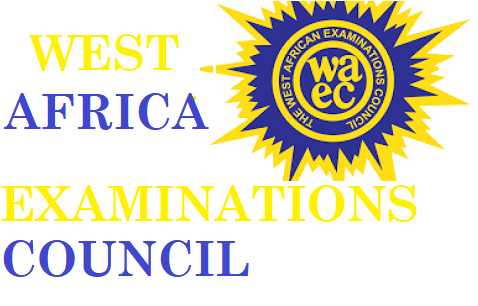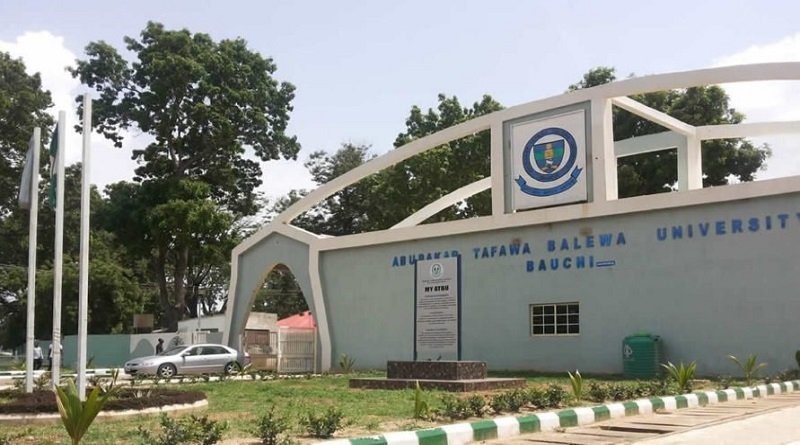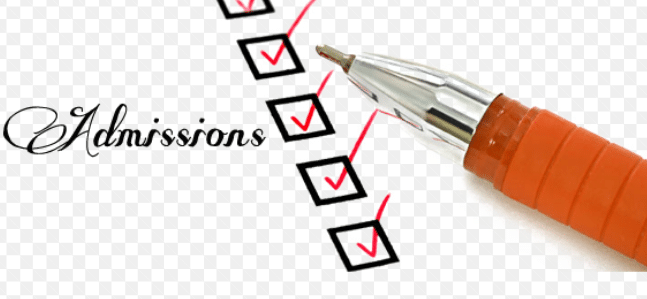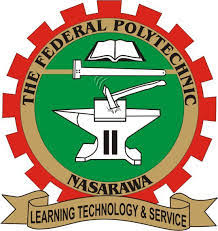WAEC Syllabus for Clothing And Textiles. WAEC Syllabus for Clothing And Textiles is available for all candidates who want to participate in the examination. The West African examination council (WAEC) has officially introduced a syllabus that will guide all the WAEC candidates who wish to write the WAEC examination this year. For a very successful WAEC Clothing And Textiles examination for this year, you need to check out the available areas of concentration. It has been divided into sections with chapters, followed by the topics to be covered in preparation for the exams. In the WAEC Syllabus for Clothing And Textiles, you will also see the format of how the WAEC Clothing And Textiles questions will be presented. Jamb form
There are always 3 sections to answer questions from. Paper 1 is Objective questions, paper 2 is essay questions and then paper 3 which contains practical’s. Where paper one (1) carries 1 hour for 60 marks, paper two (2) carries 1 hour 30minutes for 60 marks. WAEC Syllabus for Clothing And Textiles

while paper three (3) carries 2 hours 30 minutes for 100 marks.
This WAEC syllabus is for both the O’level WAEC and General Certificate Examination (GCE) candidates. Final year students in the senior secondary school level and external candidates are eligible to make use of this syllabus and prepare ahead of the examination. Jamb Result
See the full detailed information concerning the WAEC Clothing And Textiles Syllabus below.
PREAMBLE
The aim of the course in Clothing and Textiles at the Senior High School level is to train students to acquire knowledge and skills in clothing production and management. This equips students with employable skills to improve their quality of life and that of society.
OBJECTIVES
The examination syllabus is aimed at testing the basic knowledge and understanding of candidates in
- career opportunities in Clothing and Textiles.
- basic scientific knowledge in Textiles e.g. fibres, origin and construction (fabrication), selection, fabric combinations, use and care of fabrics.
- the significance of clothing, selection of appropriate clothing for all occasions and figure types.
- the selection, use and maintenance of sewing equipment.
- the clothing production skills e.g. pattern, freehand cutting and general processes in clothing construction.
- the knowledge in designing and decorating family clothing and household articles.
- the skills in the repair, renovation and remodelling of clothing and care of clothes.
- the development of entrepreneurial skills and work ethics in Clothing and Textiles.
- the development of techniques for promoting Clothing and Textiles products (modelling, exhibition, etc.).
SCHEME OF EXAMINATION
There will be three papers, Papers 1, 2 and 3 all of which must be taken. Papers 1 and 2
will be a composite paper to be taken at one sitting. Dollar to Naira Rate
PAPER 1: Will consist of sixty multiple choice objective questions all of which must be answered within 1 hour for 60 marks.
PAPER 2: Will consist of six short-structured essay-type questions. Candidates will be required to answer four questions within 1 hour 30minutes for 60 marks.
PAPER 3: Will consist of two sections. One section will be a practical test and the other will test candidates’ familiarity with their course work. The paper will carry 100 marks and will last 2 hours 30 minutes.
There will be 30 minutes preparation time prior to the conduct of the test. The test will be conducted by a visiting Examiner appointed by the West African Examinations Council. Npower Recruitment
The articles for the course work together with their pattern pieces should be presented to the visiting Examiner for assessment, for 20 marks.
DETAILED SYLLABUS
|
CONTENTS
|
NOTES |
| (1) Career Opportunities in
Clothing and Textiles
(i) Career types
(i) Work ethics
(2) Fibre and Fabric
(3) Clothing
(4) Wardrobe Planning
(5) Good Grooming
(6) Sewing Equipment/Tools
(7) Sewing Processes
(8) Garment Construction
(9) Clothing Design
(10) Care and Maintenance of Clothes
(11) Creative Fabric Craft
(12) Consumer Education
(13) Entrepreneurship
(14) OrganisingClothing and TextilesExhibition/ Modelling and Fashion Shows
|
– Reasons for studying Clothing and Textiles – Career types e.g. modelling, teaching, dressmaking and tailoring, textiles chemist, textiles designer, etc. – Basic requirements for careers e.g. knowledge, academic qualification, etc. – Meaning – Components – rules and regulations, attitudes, behaviours, integrity, self-confidence, etc. – Importance and benefits of work ethics.
– Meaning of fibre, yarn, fabric, etc. – Classification – Characteristics/properties – Identification – Combinations (blends, mixtures) – Fabrication/construction (weaves, crocheting, knitting) – Finishing treatments. – Concept – Functions – Classifications e.g. clothes, accessories and cosmetics. – Concept – Wardrobe for family members e.g. babies, pre-school children, teenagers, etc. – Factors to consider in wardrobe planning. – Benefits of planning wardrobes. – Concept – Importance – Factors that promote good grooming. – Selection of appropriate clothes and accessories Proper use of cosmetics. Cosmetics and health. (a) Classification (i) By size: large and small equipment (ii) By functions e.g. pressing, cutting, measuring, etc. (b) selection/choice (c) factors affecting choice (d) use and care ( e) reasons, correct handling, storage. (f) Sewing Machine (i) Types, advantages and disadvantages, brands (ii) Factors affecting the selection of the sewing machine. (iii) Parts of the sewing machine. (iv) Functions of the parts of the sewing machine. (v) Setting and threading the sewing machine. (vi) Care (vii) Common faults and remedies (g) Safety in the use of Tools/Equipment.
(i) Stitches
– types – classification – uses – rules for working stitches
(ii) Seams -types – classification – choice of seams – rules for making seams.
(iii) Arrangements of Fullness – types – factors for choosing fullness. – rules for working.
(iv) Edge Finishes – concept – reasons – edges requiring finishing – types of finishes – points to consider when choosing edge finishes
(vii) Pockets – types – functions – attachment
Advanced Techniques (a) Essentials of garment construction (i) Lining and interfacing – concept – importance – suitable fabrics for lining e.g. satin, fine polyester, muslin, etc. – suitable fabrics for interfacing e.g. canvas, vilene, petersham etc. – ways of fixing lining.
(ii) Fashion features – types e.g. collars, necklines, sleeves, frills, belts, etc. – uses – directions for working.
(iii) Simple patterns (a) Types of patterns (i) Commercial Pattern (Printed and Perforated) (ii) Freehand cutting, etc. (iii) Drafted and adaptation (b) Taking body. measurement (c) Pattern making e.g. bodice, skirt, sleeve, short, etc.
(d) Pattern Adaptation and Alteration (i) Adaptation of basic block (ii) Simple alteration (e) Laying and cutting out. (f) Fitting garments.
(i)Elements of design e.g. line, colour, etc. (ii) Principles of design e.g. balance, rhythm.
(iii) Application of principles and elements of design in clothing construction and selection. (iv) Identification of figure type for both male and female (v) Choice of styles for different figure types.
(a) Care labels
(b) Stains (i) types, (ii) agents, (iii) removal of stain.
(c) Laundry (i) steps in laundry, (ii) washing of simple fabrics e.g. cotton, linen and wool.
(d) Dry cleaning (i) Home-sponging (ii) Commercial
(e) Repair and customizing – repair/mending renovation – remodelling
(f) Storage and packing of clothes
(a) Patchwork (b) Appliqué (c) Hand and machine embroidery (d) Soft toys (e) Crocheting, knitting (f) Macrame
(a) Principles of shopping – meaning of a consumer and consumer education. – rights of a consumer – Enforcers (govt agencies, consumer agencies and regulations) – points to bear in mind when shopping for Clothing and Textiles products. (b) Sources of Clothing and Textiles products (budgeting and impulsive buying) – market – departmental stores – hawkers etc.
Setting up a Clothing and Textiles enterprise. (a) Explanation of terms (i) – entrepreneur – entrepreneurship – enterprise, etc. (ii) – Characteristics of entrepreneur (iii) – Advantages and disadvantages of an entrepreneur. (b) Requirements for a Clothing and Textiles entrepreneur e.g. knowledge and skills.
(c) Factors that promote success in entrepreneurship (d) Clothing and Textiles Enterprises – tailoring/dressmaking – itinerant sewing – alteration specialist, etc. (e) Setting up a Clothing and Textiles enterprise (i) choice of business idea (ii) market research (iii) development of business plan (f) Managing a Clothing and Textiles enterprise
(i) Meaning of terms – exhibition, modelling and fashion show (ii) Types (iii) Purpose (iv) Factors to consider (i) Publicity (mass media, print media). (ii) Security, where to exhibit. (iii) What to exhibit, etc.
|
SUGGESTED READING TEXTS
- Clolthing and Textiles for Senior Secondary Schools by Ministry of
Education, Ghana.
- Needlework for Schools by Melita M. Neal.
- Needlework Notebook by Rhiannon Davies.
- Certificate Needlework by Cecile Miles.
- Basic Needlework by W. Bull.
- Home Economics for Schools Books 1, 2 & 3.7.
- Dressmaking Made
- Simple by Gideon Lippman and Dorothy Erskine.
- Clothes by Margaret Butler.
ITEMS REQUIRED
- Full length dressing mirror;
- Scissors
(a) Cutting out scissors;
(b) Trimming scissors;
(c) Pinking shears;
(d) Embroidery scissors
(e) Buttonhole scissors;
- Cutting-out table
- Sewing needles and pins
- Tape measure
- Thimble
- Sewing machine
- Dummy
- Cabinet
- Ironing board/pressing iron, etc.
- Buckets (metal and plastic)
- Wooden turner
- Washing bowls
- Gloves
- Wooden Tongs
- Iron pots.
Check and confirm: How Much is Dollar to Naria Today



![UNILAG HRDC Application form 2024/2025 [Advanced Diploma, Diploma & Professional Certificate courses] UNILAG HRDC Application form 2024/2025 [Advanced Diploma, Diploma & Professional Certificate courses]](https://infoguidenigeria.com/wp-content/uploads/2021/08/UNILAGOS.jpg)